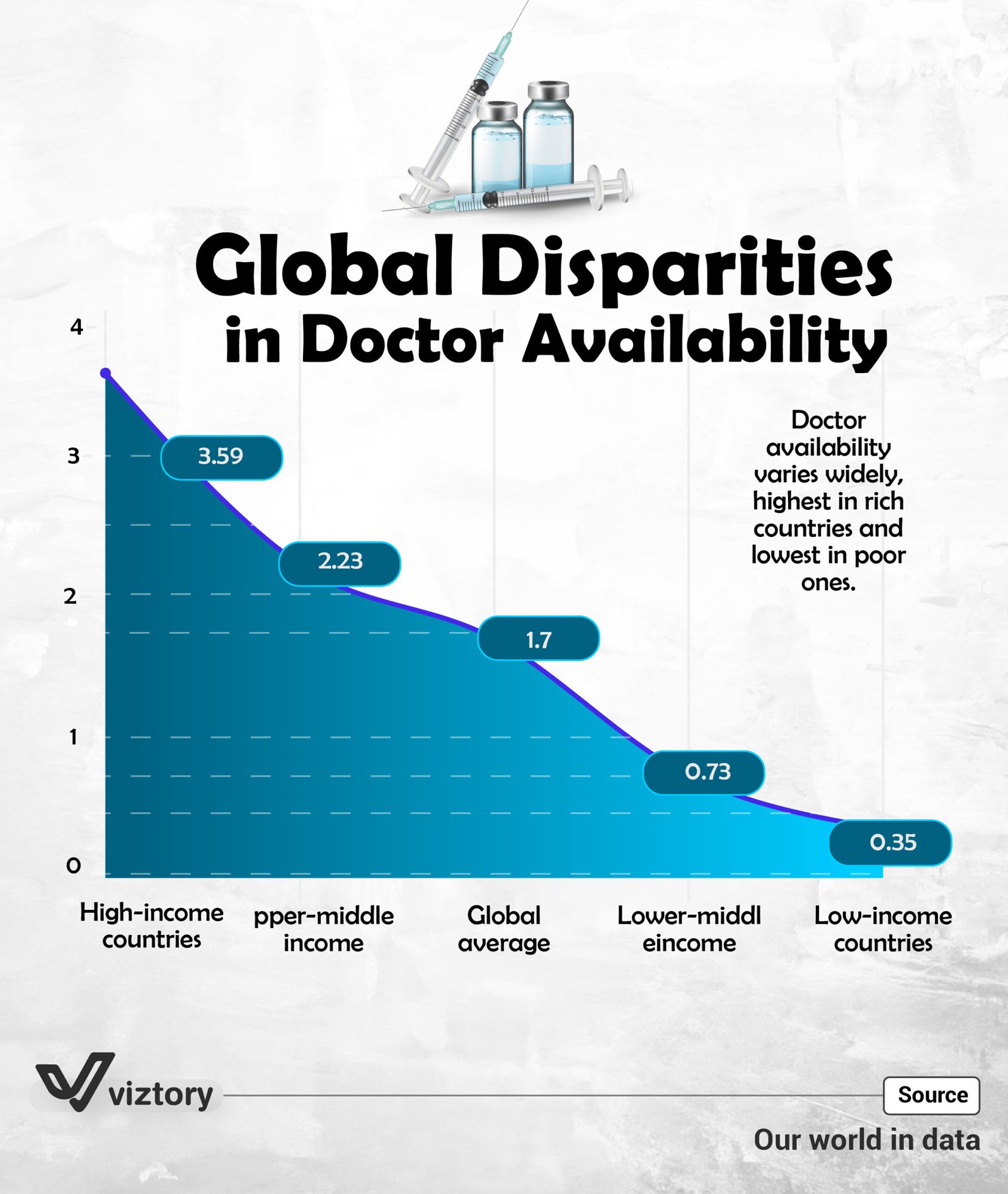Global Disparities in Doctor Availability
Introduction
Healthcare is one of the most critical indicators of a nation’s well-being and development. Yet, as illustrated in the infographic titled “Global Disparities in Doctor Availability”, access to medical professionals remains highly uneven across the globe. The chart reveals a clear and concerning trend: the wealthier the country, the greater the availability of doctors; the poorer the country, the scarcer the access.
Numbers That Speak Volumes
The data highlights significant gaps in doctor availability between income levels:
-
High-income countries average 3.59 doctors per 1,000 people, reflecting broad access to medical care and specialized services.
-
Upper-middle-income countries drop to 2.23 doctors per 1,000 people.
-
The global average sits at 1.7.
-
Lower-middle-income countries experience a steep decline to 0.73 doctors per 1,000.
-
Low-income countries struggle with only 0.35 doctors per 1,000 people.
This disparity raises serious concerns about global healthcare equity and outcomes.
Unequal Access Means Unequal Outcomes
Health systems depend heavily on the availability of trained professionals. In low-income countries, the shortage of doctors has tangible and often tragic consequences:
-
Hospitals and clinics are frequently understaffed.
-
Rural and remote areas may have little to no access to physicians.
-
Preventive care is limited or absent, leading to the progression of treatable illnesses.
These conditions contribute to a recurring cycle in which minor or preventable diseases escalate into serious public health crises.
Socioeconomic Impact
The consequences of medical workforce shortages extend beyond health:
-
Education is disrupted when children suffer from untreated illnesses.
-
Workforce productivity declines as untreated conditions reduce individuals’ ability to contribute economically.
-
Economic development stalls as nations face persistent health burdens and repeated health emergencies.
Doctor availability is therefore not solely a healthcare issue—it is a fundamental development issue.
Analysis
This data tells a broader story about structural imbalance in global health systems. Several key issues are at play:
-
Infrastructure Divide: Wealthier nations have greater capacity to invest in medical education, infrastructure, and systems to retain professionals.
-
Brain Drain: Many qualified doctors from low-income countries migrate to higher-income nations in search of better opportunities, further depleting already strained health systems at home.
-
Policy Gaps: Long-term planning and sustainable investment in healthcare education and workforce development are often lacking in resource-constrained settings.
These factors combine to widen the gap between countries that can provide sufficient care and those that cannot.
Conclusion
The global healthcare challenge is not only about the presence of resources, but also about how they are distributed. The stark differences in doctor availability underscore the urgent need for targeted international cooperation and smarter, long-term investment in healthcare systems—particularly in low-income regions.
True progress in global health will remain out of reach as long as such disparities persist. Addressing these gaps is not merely a health imperative, but a moral and developmental one as well.

